You may not find this terribly rewarding unless you're included here, so this is a good time for casual and random browsers to turn back before they get too caught up in the sweep and majesty of the proceedings and can't let go.
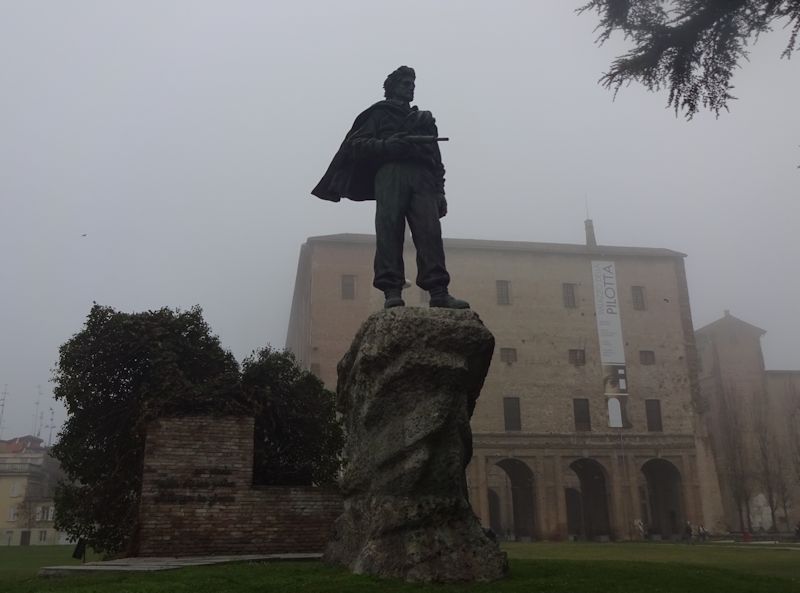
We're back to the Palazzo della Pilotta, 18 February, promised a very brief entry into the Baroque corridor of the Galleria Nazionale -- this, again, is the monument to the partisans, created in 1956, that we saw yesterday . . .

. . . and here's the part we missed. OOoof.
Compare the Partigiana, by Augusto Murer (1964) in the Venice lagoon.

|
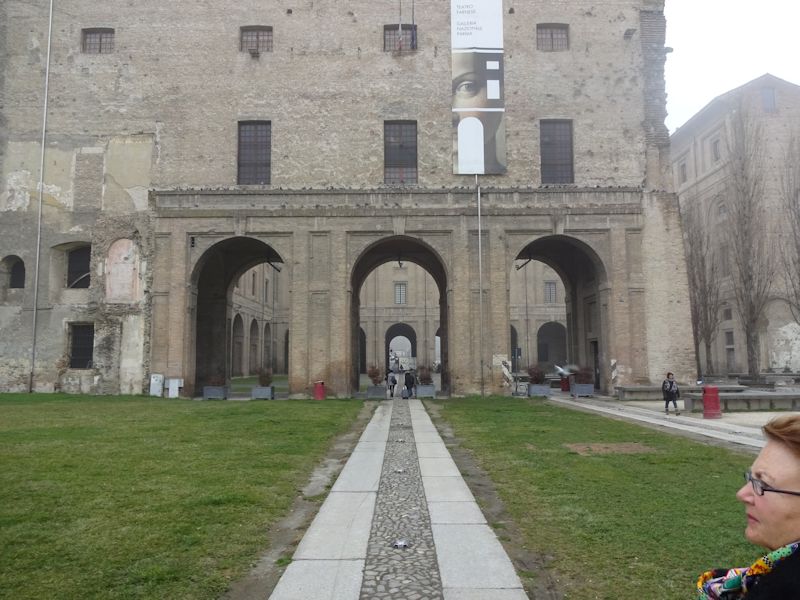
We've been told to line up at the Leonardo da Vinci "Lady with the Mussed-Up Hair" at 10 a.m.
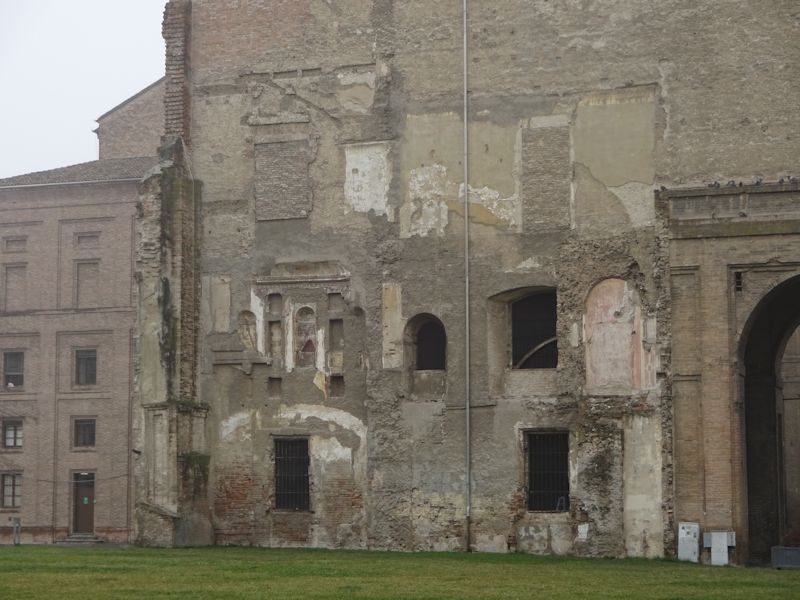
Allied bombing, May 1944 -- they mistook it for the rail yards!

Through the fabulous Teatro Farnese, hurrying . . .
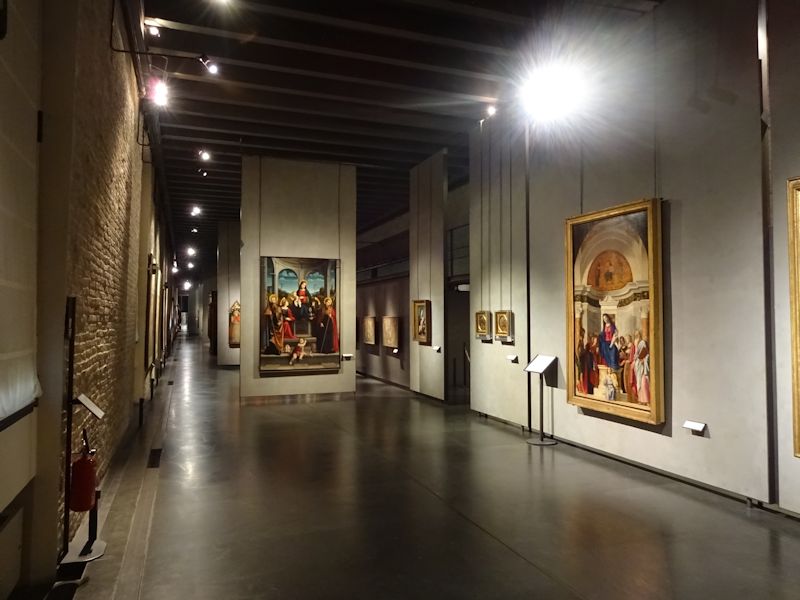
. . .down the medieval corridor, scuttling . . .
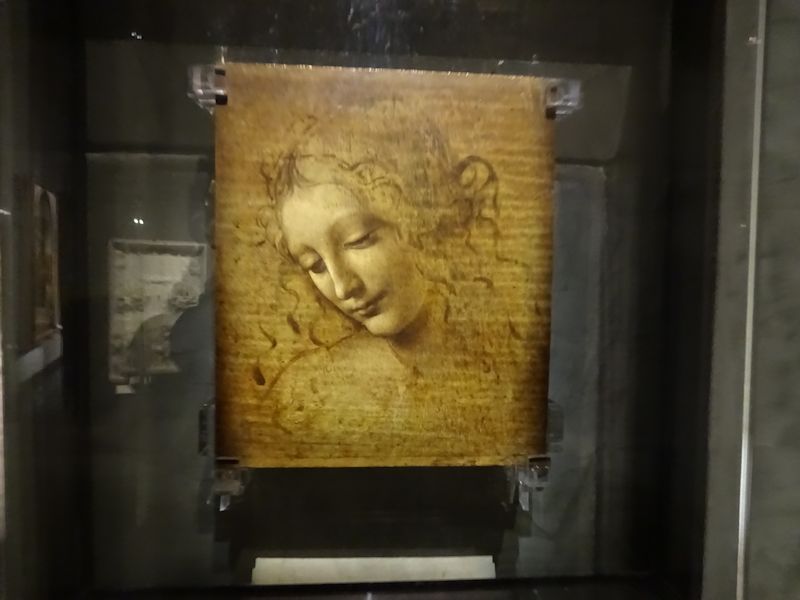
. . . to the Leonardo La Scapigliata, whence we'll be admitted into another part of the building, virtually a private showing, as only one young studenty fellow is with us, and of course our watchful timekeeper, for exactly one half hour.

It's worth the wait. This is Holbein's portrait of our hero, Desiderius Erasmus of Rotterdam. Erasmus was so famous in his time that he needed many portraits to send to his pleading admirers; Holbein himself made three for him in 1523 when they were both living in Basel. (The best-known one is in the National Gallery, London, nearly identical, except that in this one the book is open, and there's no scholarly background.)
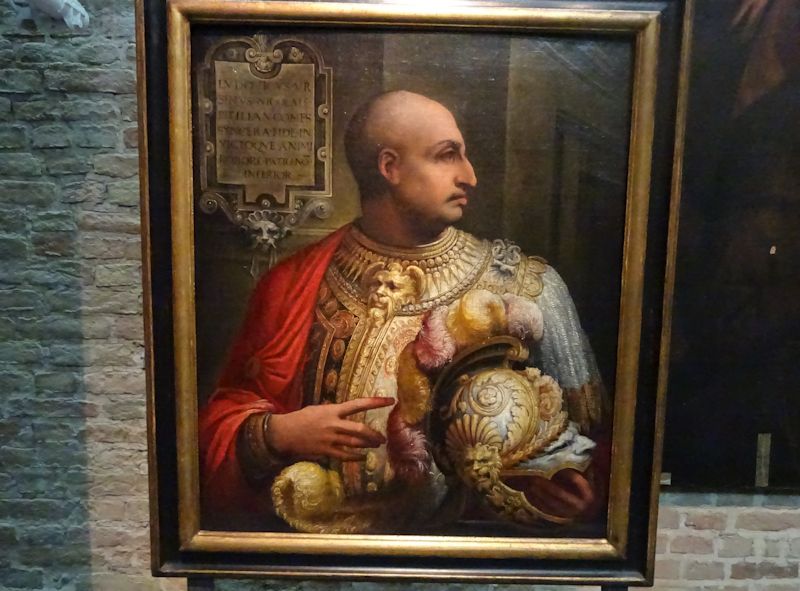
A less photogenic chap, this one, but whereas Erasmus illustrates the look of the fashionable humanist scholar, Ludovico Orsini shows us how a fashionable military thug presents himself. Ludovico, son of the famous condottiere Niccolò Orsini of the Pitigliano branch of the family, was an indifferent military commander who fought for both the French and the Spanish during the Italian Wars, happily changing sides as circumstances suggested. His portrait, by Francesco Salviati in about 1530, is probably here because his daughter Gerolama was married off to Pierluigi Farnese, the 1st Duke of Parma; was the mother of Ottavio the 2nd Duke; died in 1590 in the Palazzo Farnese in Piacenza; and is interred in the Sanctuary of Santa Maria della Steccata here in Parma.

Like Shakespeare's Seven Ages of Man, here are the Four Ages of Alexander Farnese, the 3d Duke of Parma, another personal sort-of-hero, who served in support of his mother when she was the Spanish Governor of the Netherlands from 1559 and became Governor himself, and Captain-General of the army, in 1578. He served in the Netherlands as an almost-brilliant military commander and diplomat until his death in 1592 at 47. He never ruled as Duke of Parma; when his father died in 1586, King Philip II couldn't spare him for a journey home (it was 'Spanish Armada' time), and he named his son Ranuccio I to adminster the duchy for him as regent. If the Armada of 1588 had succeeded, he would have been leading the Spanish army into London, though he disapproved of King Philip's plan.

This a surprise bonus, a copy by the "Flemish School" (1589) of a picture by the wonderful Joachim Beuckelaer of Antwerp, a specialist in real-life market and kitchen scenes who was very popular in northern Italy for a time.

We've accumulated a mass of pictures of the Last Supper in an effort to figure out what they were actually eating there; this is by Bartolomeo Schedoni, ca. 1611. There's no easy answer to this question, but this looks uninterestingly like a calf or lamb or something. As often as not it looks more like a rat . . .
Like this one, by Alonso Vazquez (now in Seville)

Or this one, by Andrea di Bartolo, now in Bologna
 . .
|

As fans of Biblical beheadings, we can't pass up this St John the Baptist with a strangely affectless Salome, by Lionello Spada, early 17th century.

Or this similarly affectless Judith, with a huge Holofernes head, similarly by Lionello Spada of Parma, ca. 1618.

But there's still this one, by Teofilo Trufamonti, which we saw yesterday -- Holofernes looks to be responding a little more to the situation, but this Judith, too, is weirdly workmanlike.

Local politicians, wooing the voters

A brilliant Annunciation, in walnut wood (Lorenzo Haili, who died in Parma in 1702)

Two nice pictures of Rome, a "capriccio" with Colisseum and another with the Capitoline, both by Bernardo Bellotto, 1740s

We're passing out through the medieval rooms again, where the eye is caught by this polyptych altarpiece, rich in amusing events of the life of St Peter Martyr, by Agnolo and Bartolomeo degli Erri of Modena, mid-late 15th century.

On closer inspection, it begins to look a little strange -- what on earth is that guy doing in the middle panel, with all those people watching?

And what's the matter with the half-a-baby? St Peter Martyr, of Verona, a capable persecutor of Cathar heretics, a Dominican agent of the Inquisition, in fact, was assassinated in 1252 with an axe in the head by a brute named Carino, hired by a consortium of northern Italian Cathars. He was able, as his last act, to write out the Apostle's Creed on the ground with his blood. During his life he frequently conversed with dead saints, all of whom had been virgin martyrs. His assassin, Carino, repented and joined the Dominican convent of Forlì as a lay brother, where after his death a local cult of Blessed Carino of Balsamo grew up.
Iconographically, Peter, the Dominican Order's first martyr, is usually shown with a meat cleaver in his head.
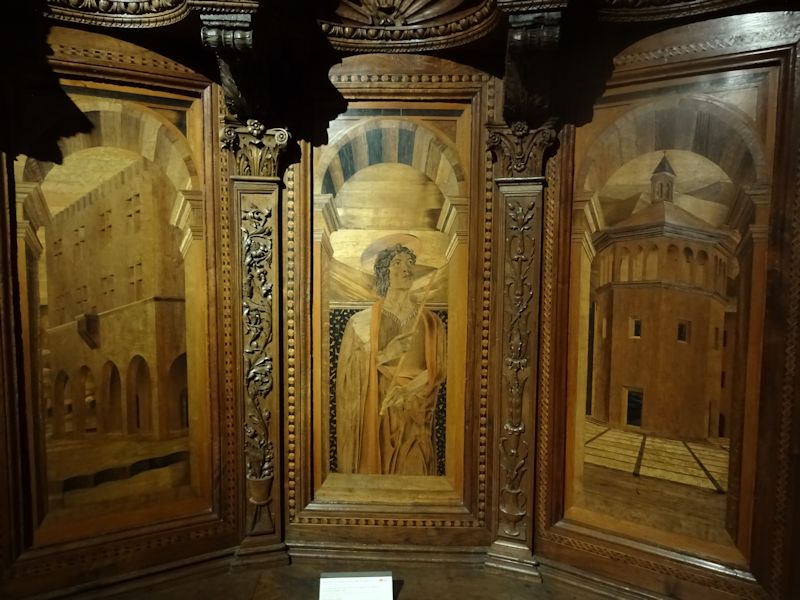
Intarsia inlaid wood from the 1490s
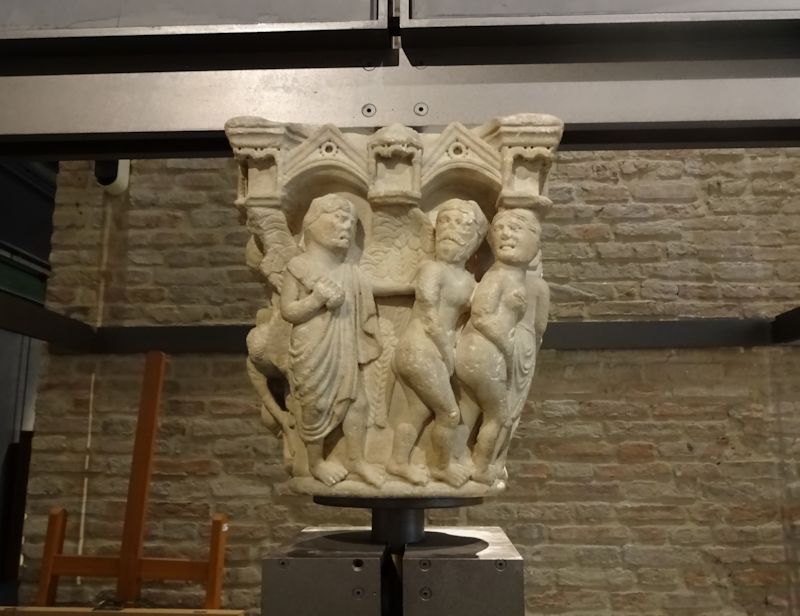
Capitals by Benedetto Antelami -- this one is of Adam and Eve expelled from the garden, 1178
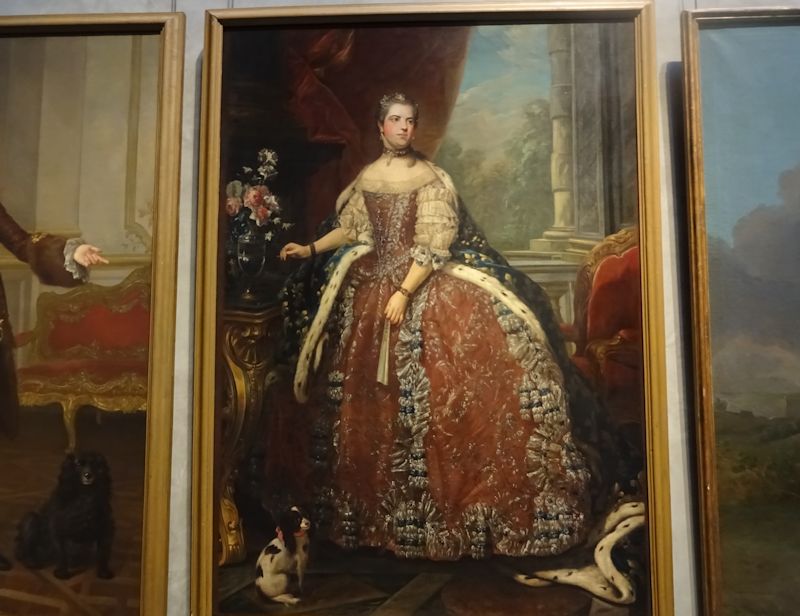
The imposing Louise Élisabeth of France, Duchess of Parma from 1748 to 1759 (died at 32), who was married to Philip of Spain (son of King Philip V and his wife Elisabeth Farnese), the chap who became the first Duke of Parma of the line of Bourbon-Parma. The portrait is apparently by Charles-André van Loo, but the label here attributes it to Laurent Pecheux.

The imposing Louise Élisabeth in a rather uncomfortable family setting. The teenagery girl in the back subsequently married Marie Antoinette's older brother, the Emperor Joseph II. The little boy became the next Duke of Parma in 1765. The young girl, called Maria Luisa, later became the Queen Consort of Spain and progenitor of the various Bourbon lines of Spain, the Two Sicilies, and Orléans. This picture is by Giuseppe Baldrighi and . . .

. . . here is Giuseppe Baldrighi hisownself, painter to the court of Parma, unable to convince his wife of something probably trivial.

More stuff, and now just time for a last prance through the Correggio rooms
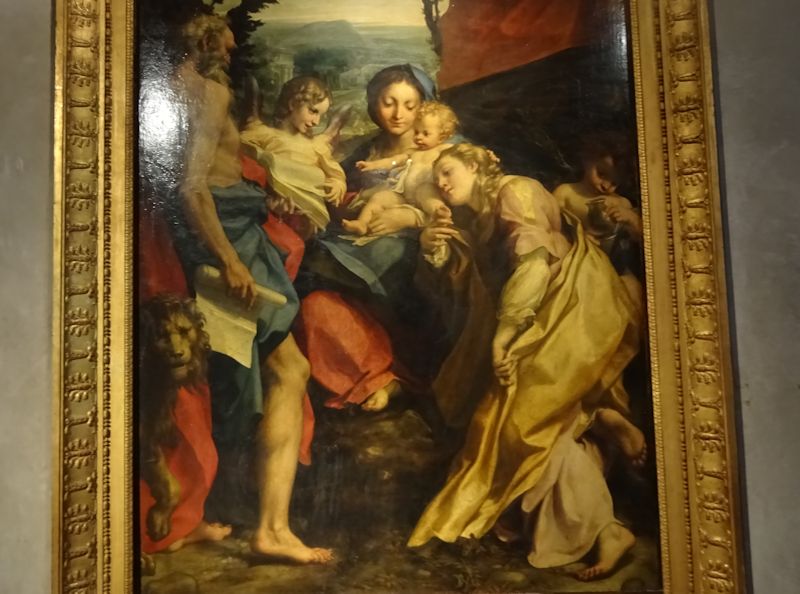
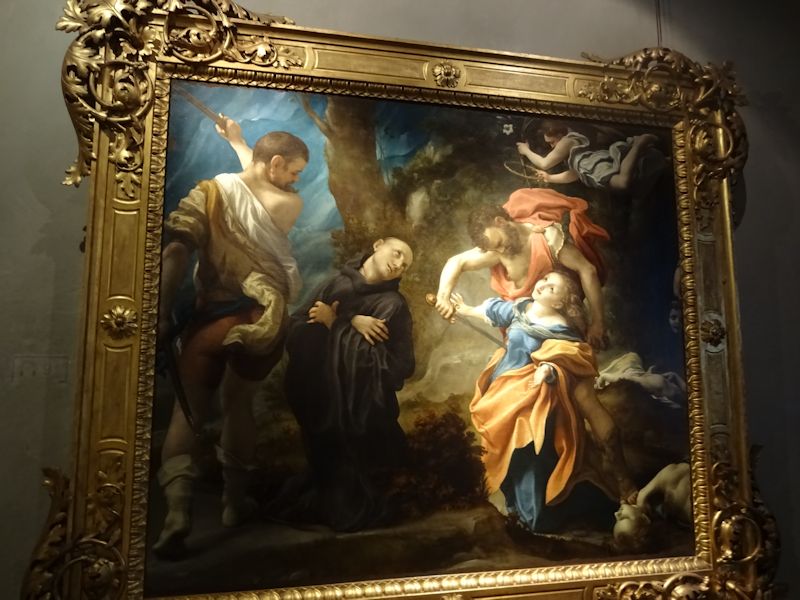

Well, that was fine. Now we'll leave.

A sunlit courtyard in the Palazzo della Pilotta

Schoolkids headed for a Day of Culture
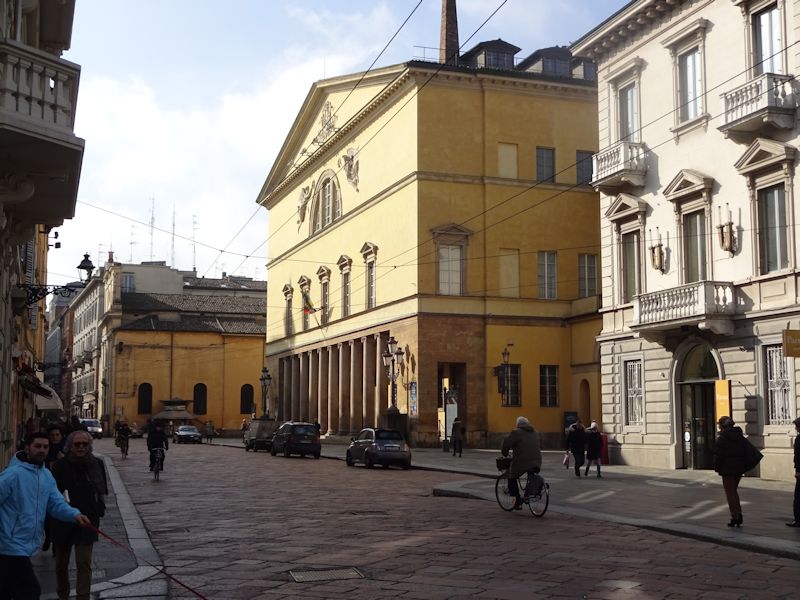
The Teatro Regio on the Via Giuseppe Garibaldi
Scenes from the life of Jesus above the women's galleries, and there's the pulpit
Slaughter of the Innocents, at a guess; all of this series was done by Gambara and Gatti between 1567 and 1573.
. . . especially the daring part. Not your off-the-shelf portrait of the Madonna.
The white and pink marble altar table, created by one of Antelami's assistants in the late 12th century
. . . animals as never seen in nature.
The baptismal font, from 1299.
 Dwight Peck's personal website
Dwight Peck's personal website
































































